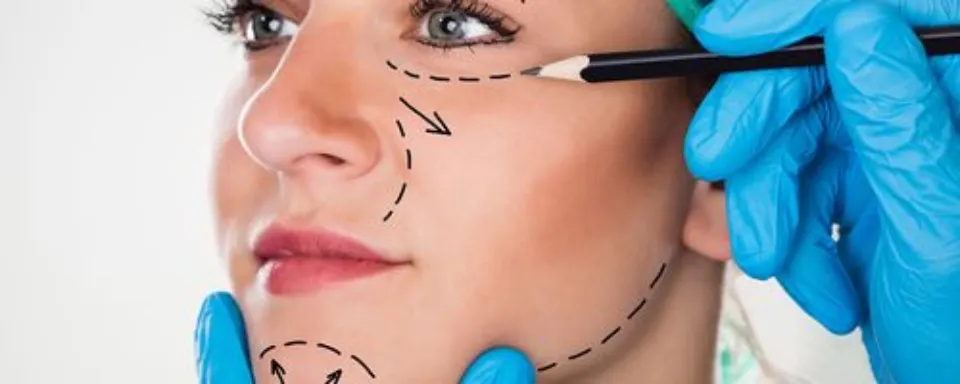
How Long Does a Facelift Last – Does It Work Long Term?
You can look younger after a facelift, and the results can last for years. What about the duration of a facelift? The length of time it lasts for you is determined by what factors, though? You must be aware of the following.
Results from a facelift should last the majority of patients for about 10 years. The effects of a facelift aren’t long-lasting because your skin will keep aging afterward.
Types of Facelifts

- Deep Plane Facelift
It is common practice to lift and reposition the deeper layers of the facial tissues during a deep plane facelift. This provides support for the skin and underlying structures, producing results that look more natural and last longer. The longevity-enhancing effects of this type of facelift are also aided by the fact that it is frequently less invasive than other types.
The typical lifespan of a deep plane facelift is ten years or longer.
Read More: How to Get Rid of Babyfat on Your Face
- Traditional Facelift
The appearance of wrinkles and sagging skin is improved by a traditional facelift by lifting the skin and underlying tissues of the face. But compared to a deep plane facelift, this procedure is more invasive and might not produce results that last as long.
Typical facelifts last between five and ten years.
- Skin Only Facelifts
A facelift that only works on the skin is known as a skin-only facelift. This type of facelift is the most superficial because it doesn’t lift or reposition the facial tissues’ deeper layers. Skin-only facelifts consequently frequently last less time than other facelift procedures. Furthermore, skin-only facelifts frequently have a higher risk of developing side effects like infection and scarring.
A Skin Only facelift typically lasts between two and five years.
- Mini Facelift
In comparison to other types of facelifts, a mini facelift is less invasive. Mini facelifts can last several years and typically require less time to recover from. Additionally, complications like infection and scarring are frequently less likely to occur with mini facelifts.
Mini facelifts usually last between five and seven years.
- SMAS Facelift
A facelift that works on the superficial musculoaponeurotic system (SMAS) is known as a SMAS facelift. A layer of connective tissue called the SMAS aids in supporting the facial structures. An appearance that is more youthful and lasts for several years can be achieved with this facelift. SMAS facelifts also frequently have lower complication rates than traditional facelifts, including lower rates of infection and scarring.
Usually lasting seven to ten years, SMAS facelifts.
- MACS Facelift
A MACS facelift is a type of facelift that uses fewer incisions and tissue dissection, which reduces scarring and shortens the recovery period. Infection and other complications following MACS facelifts are also frequently less common.
Usually lasting 5 to 7 years, MACS facelifts.
There are numerous types of facelifts that each have their own benefits and drawbacks. During your consultation, Dr. Hamadeh will go over the various options with you.
How Long Does a Facelift Last?

Long-lasting results can be obtained from a facelift. The aging process is the only thing standing in the way of it producing totally permanent results. The aging process can be fought, but it cannot be stopped. You may experience results that last up to 20 years after having this procedure. Your age at the time of surgery and the rate at which your body ages determine how long your results will last overall.
This procedure can give you long-lasting results, but it’s important to have reasonable expectations. The outcomes of this procedure may endure the test of time because as you age, you might eventually notice the recognizable marks of aging starting to appear on your face. When these aging symptoms do appear, there are noninvasive approaches you can take, and we can help you decide which is best for you if and when that time comes.
Why Are Facelifts Not Permanent?
Facelifts are not permanent for a number of reasons, one of which is that the aging process is not stopped by them.
It is impossible to stop or reverse the natural aging process. Facelifts only address the outward manifestations of aging, such as wrinkles and sagging skin, and do not address the underlying factors that contribute to aging, such as structural changes in the skin. Facelifts can therefore only momentarily mask the telltale signs of aging. As we continue to age, the effects of a facelift will gradually fade over time.
As was previously mentioned, this is dependent on the candidate for surgery, the type of procedure, and how well you take care of your skin.

What is the Best Age to Get a Facelift?
Depending on the age of the skin when the procedure was performed, the results last. If the mini facelift is performed on
In general, people between the ages of 40 and 60 are the most common candidates for facelifts. There is no ideal age for a facelift; it depends on the age and the health of the patient’s skin. While some people may not notice any changes until they are well into their 60s, others may begin to show signs of aging as early as their 30s.
Depending on their individual skin types and how well they take care of their skin, each person detects the signs of aging at a different age. Some people choose to get a facelift in order to make themselves appear as young as they feel after they are comfortable with their level of aging.
Although ageing is a natural process that cannot be reversed, its effects can be lessened with a facelift. A properly done facelift will make you look better and, in many cases, aids people in regaining their confidence.
How Many Times Can You Get a Facelift?

Patients can emphasize their natural beauty with a mini facelift. Theoretically, you can undergo a facelift as often as you like. But it’s important to remember that every time you get a facelift, recovery will take longer and complications are more likely. In order to give the skin time to heal properly between facelifts, it is typically advised that patients wait five years between procedures.
Although you can get a facelift as frequently as you’d like, it’s important to speak with a plastic surgeon to make sure it’s the right choice for you. They’ll be in a position to evaluate your situation and give you the most useful advice.
How Long Does It Take for a Facelift to Look Normal?
Usually, it takes two to three weeks for a facelift to look normal. During this time, you might experience some facial bruising and swelling. You will receive detailed instructions from your surgeon on how to care for your incisions and what to anticipate during your recovery. Within two to three weeks of surgery, the majority of patients are healthy enough to resume their normal routines, including work. However, it might take a while before you can see your final results and all the swelling has subsided.
Is Getting a Facelift Worth It?

A facelift’s value may be questioned by some people. The response to this query is based on personal goals and objectives. Consider a facelift if you want to look younger and are dissatisfied with the signs of aging on your face.
In order to look younger and more refreshed, a facelift can help turn back the hands of time. Additionally, it can support improving your self-esteem and confidence.
Consultation with a plastic surgeon is necessary before deciding whether or not to have a facelift in order to go over your expectations and goals. If a facelift is appropriate and can help you get the results you want, they will be able to advise you on that.
Is a Mini Facelift Painful?
There is always some pain and discomfort after a facelift, whether it is a mini or a full one. Because only specific areas of the face were tightened, the mini facelift causes less pain. Compared to what those who receive a full facelift experience, this pain is considerably less severe.
Immediately following the procedure, there could also be a small amount of light bruising and swelling. However, just a few days after the procedure, people who had a mini facelift could return to their regular activities. One of the benefits of choosing this procedure over the alternative is the mild pain and ability to recover more quickly than with a full facelift. After surgery, the majority of patients only require a few days’ worth of over-the-counter painkillers.
Importance of Aftercare and Maintenance

You must pay close attention to your recovery if you want to maximize the benefits of your facelift.
As long as you work with a highly skilled cosmetic surgeon, complications from facelift surgery are rare.
Any surgery, though, carries some risks. You must therefore carefully adhere to all aftercare and maintenance recommendations made by your surgeon.
Speaking of maintenance, you need to keep the results of your facelift by using premium creams and other over-the-counter products.
You must also establish routines to maintain healthy, youthful-looking skin. These practices include eating a balanced diet, exercising, getting enough sleep, and properly cleaning your face.
You will look your best and preserve the results of your facelift by taking care of your body’s overall health in addition to your skin.
Conclusion
An aesthetic procedure can alter your life. It won’t matter very much how much a facelift costs once you realize how it can change your life. You’ll also understand that one of the best investments you can make is a facelift.
FAQs
What is the Best Age to Have a Facelift?
People in their 40s, 50s, and 60s, when aging signs start to become more obvious, are the best candidates for facelifts. The best way to treat aging-related issues like deep lines, wrinkles, fine lines, and sagging skin is through surgical procedures as opposed to non-surgical ones.
What Happens 10 Years After a Facelift?
In general, you should anticipate anti-aging of the face and neck to be dramatic but natural-looking, and to appear ten years younger. Although facelifts produce permanent results, the aging process is unavoidable. Therefore, even after ten years, you will still appear to be ten years younger.
Do Facelifts Work Long Term?
You may appear up to 10 years younger after a facelift. The effects of a facelift are typically long-lasting, and with the right skin care, they can be kept up for many years.




Average Rating